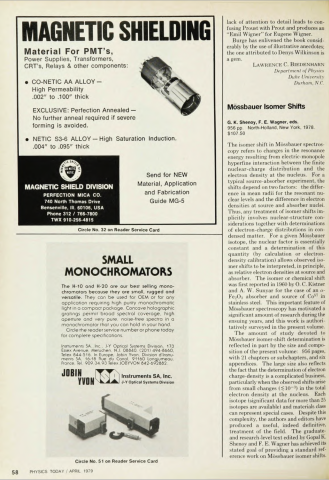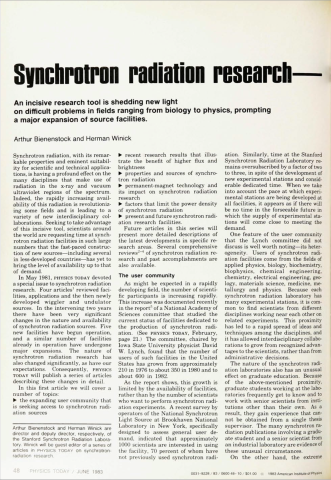Author(s)
G. K. Shenoy, F. E. Wagner, and H. Hollis Wickman
Publication Date
April 1979
Publisher
American Institute of Physics
Citation
Physics Today 32, 4, 58 (1979)
Abstract
The isomer shift in Mossbauer spectroscopy refers to changes in the resonance energy resulting from electric-monopole hyperfine interaction between the finite nuclear-charge distribution and the electron density at the nucleus. For a typical source-absorber experiment, the shifts depend on two factors: the difference in mean radii for the resonant nuclear levels and the difference in electron densities at source and absorber nuclei. Thus, any treatment of isomer shifts implicitly involves nuclear-structure considerations together with determinations of electron-charge distributions in condensed matter. For a given Mossbauer isotope, the nuclear factor is essentially constant and a determination of this quantity (by calculation or electrondensity calibration) allows observed isomer shifts to be interpreted, in principle, as relative electron densities at source and absorber. The isomer or chemical shift was first reported in 1960 by O. C. Kistner and A. W. Sunyar for the case of an «FeiOa absorber and source of Co 57 in stainless steel. This important feature of Mossbauer spectroscopy has motivated a significant amount of research during the ensuing years, and this work is authoritatively surveyed in the present volume.









